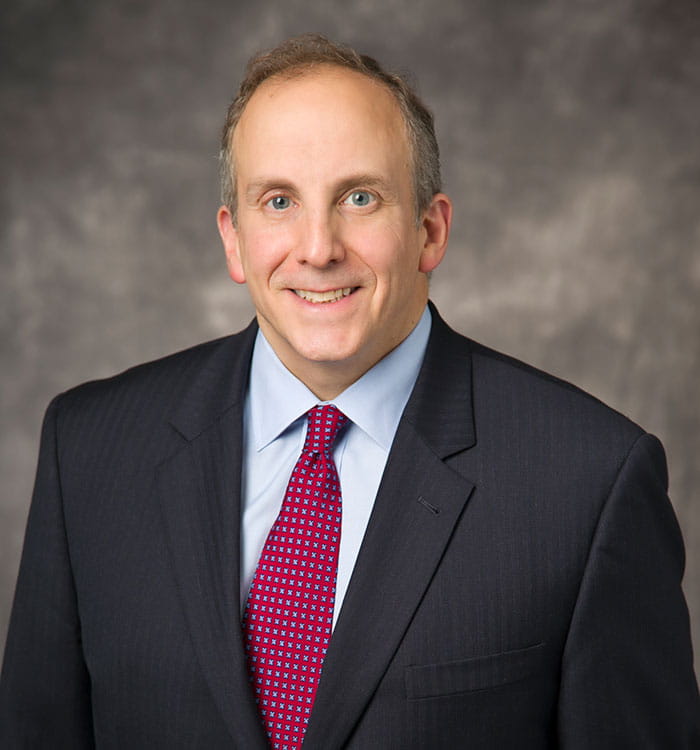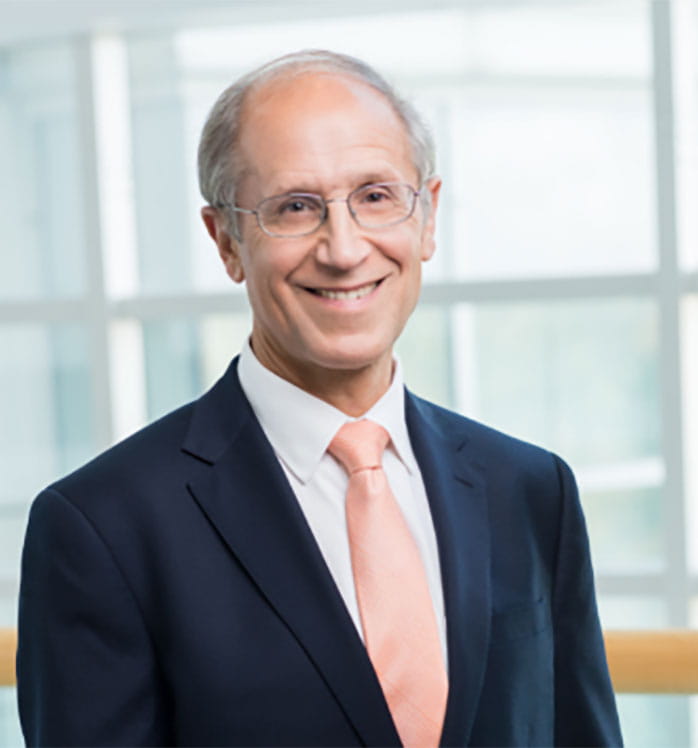Novel Gene Therapy Treatment for Glioblastoma Moves Forward at UH Seidman Cancer Center
February 10, 2021
Phase II clinical trial of promising approach soon to begin at UH Seidman and second site at the NIH Clinical Center
Innovations in Cancer | Winter 2021
More than a decade ago, UH neurosurgeon Andrew Sloan, MD, and oncologist Stan Gerson, MD, Director of the Case Comprehensive Cancer Center, had the idea to use gene therapy to alter the repair enzyme MGMT in glioblastoma multiforme (GBM) patients. MGMT is known to be an important prognostic indicator in GBM.
 Andrew Sloan, MD
Andrew Sloan, MD Stan Gerson, MD
Stan Gerson, MD“Patients who have a big carbon group blocking the MGMT enzyme are said to be ‘methylated’ and comprise the ‘good prognosis’ group. They don’t make much MGMT, and chemo and the radiation work great,” says Dr. Sloan, who is a Distinguished Physician and Director of the Brain Tumor & Neuro-Oncology Center and the Center of Excellence for Translational Neuro-Oncology (CETNO) at UH Cleveland Medical Center and UH Seidman Cancer Center; and Professor of Neurosurgery, Case Western Reserve University School of Medicine, “Those patients do much better -- almost 50 percent of them live for two years. However, about 55 percent of patients don’t have that feature – they are unmethylated and make lots of MGMT, which protects the tumor from chemotherapy. They comprise the ‘poor prognosis’ group with a median two-year survival of only 13.8 months. That’s where we’ve been since 2005.”
Faced with this challenge, the duo wondered if they could convert patients from ‘poor prognosis’ to ‘good prognosis’ by inhibiting MGMT with the chemotherapeutic agent O-benzylguanine (BG). But there was a down side. Previous studies had shown that while BG did effectively inhibit MGMT, it also caused an unacceptable amount of bone marrow side effects.
“BG has two different effects – one makes the brain tumor respond to chemo,” Dr. Sloan says. “But the other damages the bone marrow. We began to think “What if we could separate those two populations and treat them as different compartments in the body?"
This, Dr. Sloan says, led to the idea of using gene therapy to alter MGMT. The approach relies on a mutant gene developed by Dr. Gerson called P140K, which does not bind BG. Hematopoietic stem cells are gathered from GBM patients’ own blood through leukapheresis, genetically engineered to produce P140K making them resistant to chemotherapy, and then re-infused to protect the bone marrow.
Dr. Sloan and Dr. Gerson have tested this approach in a Phase I clinical trial at UH Seidman Cancer Center, with promising results.
“We’ve had very few side effects,” Dr. Sloan says. “Median survival was 3.5 fold longer than expected, and the MGMT mutant was 3 to 26 times higher in peripheral blood than in untreated patients. This regimen was tolerable, safe, and enabled dose escalation of chemotherapy with impressive improvement in survival compared to a large set of case-matched studies. One patient just celebrated his fifth year after surgery and has had no therapy other than his initial resection and this trial. He calls it his “crani-versary.” And he's not only alive, he’s disease-free, and had been working full time until the pandemic. There's no evidence of tumor.”
On the strength of these results, the National Cancer Institute awarded the Cleveland team a $3 million grant to pursue a multi-center Phase II clinical trial, with a more overt focus on efficacy. That will soon get under way at UH Seidman Cancer Center and the NIH Clinical Center in Bethesda, Md.
“We're collecting new data to help us understand how and why it works better, and also when and why it fails,” Dr. Sloan says. “We want to affect the delivery of that therapy and better understand what can make it more successful.”
One question to be explored with the new NCI funding is why and how the tumor eventually grew back in some patients.
“Are there some patients who are more likely to benefit than others?” asks Dr. Sloan. “The more you can identify the patients who are likely to benefit, the better. We suspect this may be an immune phenomenon, so we want to explore interactions with the immune system further in the Phase II trial.”


